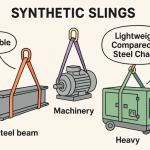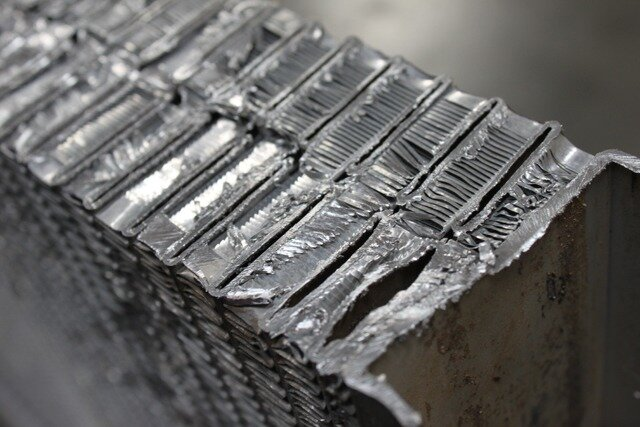Have you ever walked into a warehouse storage and felt lost or confused? Maybe boxes were stacked too high, or items were hard to reach. This can slow down work and waste time.
The good news is that a well-organized warehouse can solve many of these problems. When everything has a place, work becomes faster and easier.
In this blog post, you’ll learn smart ways to organize and improve your warehouse. By the end, you’ll understand how to create a smooth system that saves time and boosts efficiency.
Start With the Right Layout
The layout of your warehouse is the base for everything else. A good layout helps people move easily. Start by thinking about the shape of your space.
Decide where things like shelves, bins, and tables should go. Keep walkways clear and wide enough for carts or forklifts. Place high-use items near packing or shipping areas.
This saves time during picking. Think of your layout as a map that guides workers from one step to the next without confusion.
Choose Storage That Matches Your Needs
There are many types of storage systems. You need to pick the one that fits your items best. Some warehouses use tall racks for heavy products.
Others use small bins for tiny parts. If you store clothing, hanging racks might work better. Think about how often you need to reach the items.
Fast-moving products should go on lower shelves. Slow-moving ones can be stored higher. When your storage matches your stock, it becomes easier to work and find what you need.
Label Everything Clearly
Labels are like signs that tell you what’s inside a box or on a shelf. If you can’t read the label, you waste time opening boxes or guessing. Use large, clear text.
Color-coded labels help even more. You can use red for returns, green for packed items, and so on. Barcodes are also helpful if you use scanners.
Put labels where they are easy to see. Check often to make sure they are still correct. Good labeling keeps things running smoothly and helps avoid mistakes.
Use Vertical Space Wisely
Look up! You might be missing out on lots of storage space. Many warehouses waste space by only using the ground level. If your ceiling is high, you can add tall shelving units.
Just make sure they are safe and stable. Use ladders or lifts if needed. Store items you don’t need often on higher shelves. Keep lighter boxes up top and heavier ones lower down. This keeps your space tidy and makes the most of every inch.
Create Zones for Better Workflow
Dividing your warehouse into zones makes it easier to manage. For example, you can have a zone for receiving goods, another for storing, and one for shipping. You can even make zones for special items like returns or damaged goods.
This helps workers know where to go and what to do. It also cuts down on walking time.
If each zone has a clear job, everything flows better from start to finish. The fewer the mix-ups, the faster your work goes.
Train Your Staff on Best Practices
Even the best system won’t work if people don’t follow it. Take time to train your team. Show them how to store items, read labels, and move through the warehouse safely.
Let them ask questions and give feedback. When everyone understands the system, it works better for all. Give updates when things change.
Keep rules simple and easy to follow. Workers who know what to do will make fewer errors and help keep the warehouse running well.
Review and Improve Regularly
A warehouse is always changing. New products come in. Old ones go out. You may need more space or new equipment. That’s why you should check your setup often. Look at how fast items move.
Watch for slow spots or messy areas. Talk to your workers. They might have ideas on how to make things better. Don’t be afraid to move things around if needed. A small change can make a big difference. Keep improving to stay efficient.
Think About Safety Every Step of the Way
Safety is key in any warehouse. Bad setups can cause accidents. Make sure walkways are clear. Place signs where needed. Store heavy boxes low to avoid falls. Keep tools in safe spots.
If you use machines like forklifts, check them often. Train everyone on safety steps. A safe warehouse is not just good for people-it also helps keep your system smooth. When people feel safe, they work faster and better.
Make Use of Smart Technology
You don’t have to do everything by hand. Many tools can help you manage storage better. Warehouse software can track where things are.
It can also tell you when you’re running low on stock. Barcode scanners speed up picking and packing. Some warehouses use robots to move items.
Even small tools like digital checklists can help. You don’t need to spend a lot. Pick what fits your budget and needs. A little tech can go a long way in keeping things organized.
Think Ahead as You Grow
As your business grows, your warehouse will need to change too. Try to plan for the future now. Choose shelves that can be adjusted.
Leave room to add more space. Keep your layout flexible. This will save time and money later.
Think about your busiest times of the year. Will your current setup work then? Planning ahead helps you avoid problems. It also makes it easier to grow without slowing down.
Help for Online Sellers
If you sell online, especially on platforms like Shopify, your warehouse setup matters even more. Good warehouse storage for Shopify sellers makes packing and shipping faster. This leads to happy customers.
A well-planned warehouse helps you keep up with orders, handle returns, and track stock. This is key when you want to grow your online shop.
You don’t need a huge space-just a smart one. Even a small setup can work well if it’s designed the right way.
Warehouse Storage: A Smarter Space Means a Smarter Business
When you organize your warehouse, you’re not just saving space you’re saving time, money, and energy. A clean and smart system means fewer mistakes and faster service. Your workers stay safe, and your customers stay happy.
Whether you run a small shop or a large company, these steps can help your warehouse storage run better. Keep your layout clear, use the right tools, and never stop improving.
Did this guide help you? Browse the rest of this section for more advice on a variety of topics.

Dilawar Mughal is an accomplished author with a passion for storytelling. His works span various genres, from thrilling mysteries to heartfelt romance novels. With a keen eye for detail and a knack for character development, Sana Fatima weaves engaging narratives that captivate readers and transport them to new worlds.










